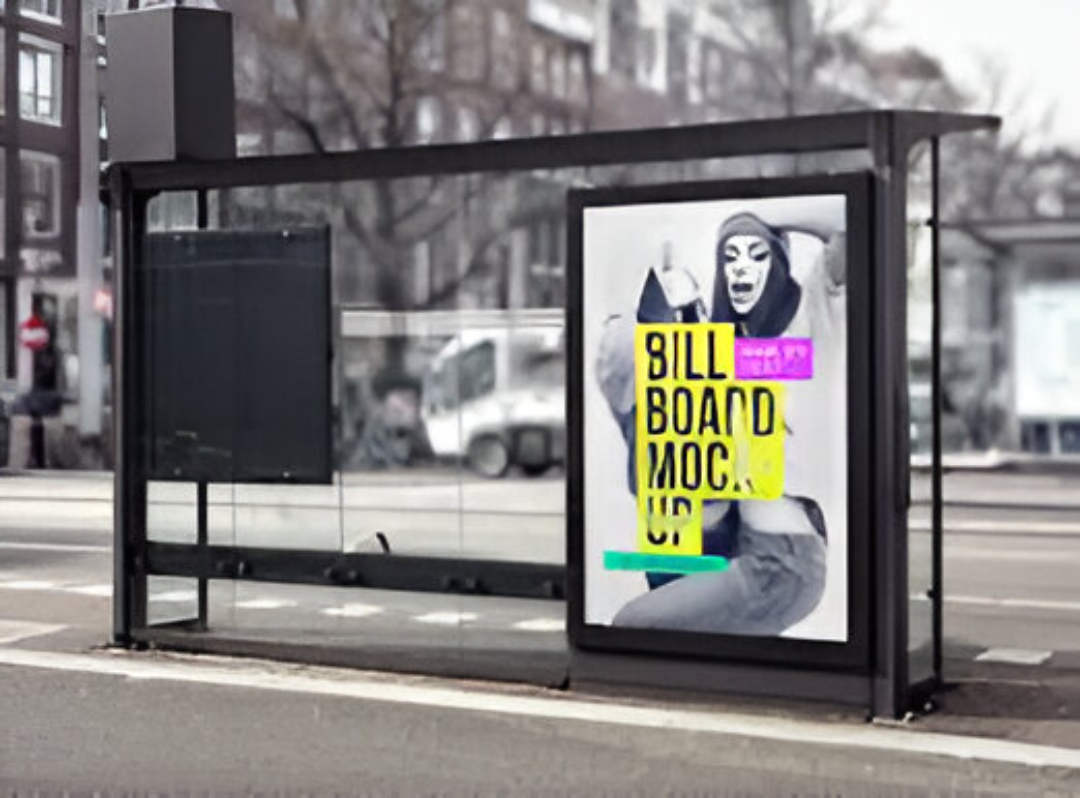
In a world overflowing with messages, brands are constantly fighting for a few seconds of attention. While online platforms allow for detailed targeting and tracking, outdoor advertising—especially at bus stops—offers something even more powerful, human psychology. Bus stop ads are not just large posters; they are strategically positioned visuals that speak to people at the right time and place.
So what makes a bus stop ad grab attention and stick in memory? The answer lies in understanding how people behave, think, and respond in public spaces. Let us explore the psychological triggers that make bus stop advertising effective and attention-grabbing.
1. The Power of Repetition and Routine
People pass the same bus shelters every day while commuting to work, school, or the market. This consistent exposure is called the mere exposure effect in psychology. The more someone sees something, the more they start to trust and recognize it, even if they are not paying full attention.
Bus stop ads benefit from this effect because they become a familiar part of a person daily routine. Over time, the brand message seeps into memory without effort. Even if someone does not need the product right away, they are more likely to recall it when the need arises later.
2. Visual Dominance in a Distracted World
Unlike digital ads, which compete with hundreds of other pop-ups on a tiny screen, a bus stop ad has the advantage of physical presence. It commands attention simply by being there in a real space where there are fewer distractions.
Human brains process visual information faster than text. A striking image with bold colors and a clear message captures attention immediately. That is why the most successful bus shelter ads use high-contrast designs and simple layouts. They let visuals speak louder than words.
3. Captive Audience Equals Higher Engagement
When people wait at a bus stop, they often have idle time. They are not walking, driving, or in a rush. This pause in movement creates a natural window for engagement. While waiting, people are more likely to observe their surroundings and notice advertisements nearby.
This is what psychologists call an open attention span. Without active distractions, the brain becomes more receptive to environmental stimuli. A creative or thought-provoking bus stop ad can take advantage of this mental space to leave a lasting impression.
4. Location-Based Relevance Builds Connection
Ads that are rooted in the local environment feel more relatable. When a person sees an ad for a nearby store, clinic, event, or restaurant right at their neighborhood bus stop, it feels relevant and useful.
This psychological trigger is called contextual relevance. When the message matches the immediate environment, it becomes more meaningful. This is why brands often include landmarks, local language, or community themes in bus stop ads to build trust and connection.
5. The Simplicity Rule
The human brain loves simplicity. Too much information leads to cognitive overload, which causes people to tune out. Bus stop ads that focus on one core message—like a discount, launch, or product benefit—are easier to remember.
Simplicity also increases the chance of recall. People might only glance at the ad for three to five seconds, so there is no time for storytelling or long descriptions. Bold headlines, clean images, and minimal text work best to get the point across quickly.
6. Emotions Drive Action
Ads that evoke emotion are more memorable. Whether it is humor, curiosity, excitement, or nostalgia, emotion hooks the brain and makes the message stick.
Bus stop advertising often uses emotional cues like
-
A smiling child to promote a family brand
-
Bright colors to trigger happiness
-
Urgent language to create a sense of need
-
Familiar faces or places to stir comfort
Emotional resonance leads to better retention and sometimes even word-of-mouth sharing.
7. Social Proof and Trust
If an ad features people, reviews, testimonials, or a sense of popularity, it taps into the concept of social proof. People are more likely to trust something that others approve of. This is especially useful for new businesses or unknown brands trying to establish credibility in the local area.
For example, an ad showing a crowded restaurant with a Most Loved Café in Town caption can build instant trust and curiosity among passersby.
8. Call to Action Triggers Decision-Making
Even with all the visuals and emotion, your audience needs a little push to act. A clear call to action, like Visit Today, Scan to Order, or Offer Ends Soon, triggers the decision-making process.
Bus stop ads work well when the action is simple and achievable. The message should make the viewer feel like they can do something immediately or soon, such as visit a store nearby or check a website when they get home.
9. Novelty and Surprise Create Interest
The brain is wired to notice what is new or unexpected. An unusual design, a clever message, or an interactive element makes a person stop and take a second look.
Creative bus stop ads that include illusions, 3D props, or interactive QR codes tap into this sense of novelty. These creative elements break routine patterns and trigger curiosity, which increases engagement and word-of-mouth impact.
The effectiveness of bus stop advertising goes far beyond visibility and location. It taps into the way people think, behave, and respond to their surroundings. By using psychological principles like repetition, simplicity, emotion, and relevance, advertisers can create powerful campaigns that influence minds and drive results.
In a digital age where attention is fragmented and fleeting, bus stop ads offer a focused, grounded, and psychologically intelligent way to connect with real people in real time. When designed with human behavior in mind, even a static poster at a local bus stop can become a lasting part of a journey.